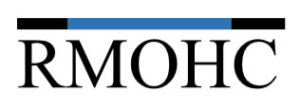
Audience:
This is the fourth of a series of training posts and videos presenting accounting in simple-to-understand English for Small Businesses and Small Government Contractors.
The goal of RMOHC is to provide client empowerment and financial peace of mind through complete, compliant, and accurate accounting.
This fourth post deals with the Balance Sheet, the first of two financial statements that are key to Small Businesses and Small Government Contractors. The other financial statement is the Income Statement, and we will cover it in a new series of posts, “The Income Statement Series.”.
Why is it called the Balance Sheet?
The Balance Sheet shows you have basically entered all your finances correctly. In accounting, every transaction has two sides (left & right sides) to it, and this is called Double Entry Accounting. If you enter a transaction on the left side, you have to enter the same amount on the right side so that both sides balance (like a hand scale)! There is much more to this, but it is not necessary here.
The BALANCE SHEET shows balances from 3 of the 5 account types:
Assets
Liabilities
Equity
Income
Expenses
The Balance Sheet Formulas:
Assets = Liabilities + Equity
This formula is key to both Small Businesses and Government Contractors. Notice the total of all Assets, and see that it is equal to the combined balances of Liabilities + Equity. In the next post (“Balance Sheet Example”), you will see a sample balance sheet using what we have covered here.
Your Company’s Worth:
The Balance Sheet Formula stated another way tells you how much your company is worth:
Assets – Liabilities = Equity
In other words, if you take out what you owe (Liabilities) from what you own (Assets), that is what your company is worth.
Remember:
The Balance Sheet combines what you own (Assets), what you owe (Liabilities), and what you actually own in the company (Equity) in one financial statement (report): The Balance Sheet. There is a lot of valuable information that you, the owner, as well as outside parties such as banks, vendors, and others, can learn from this report.
Basic Balance Sheet Formula:
Assets = Liabilities + Owner’s (Partners’) Equity
What your company is worth Formula:
Assets – Liabilities = Owner’s (Partners’) Equity (= What your company is worth)
Thank you for reading this post, watch for video series that will be coming out very soon.
If this was helpful, please share this with your friends and colleagues.
Here’s to your peace of mind!!
-Michael

